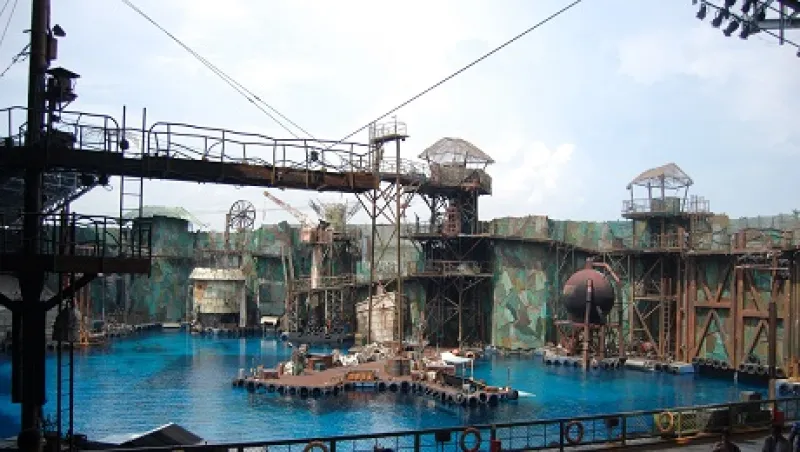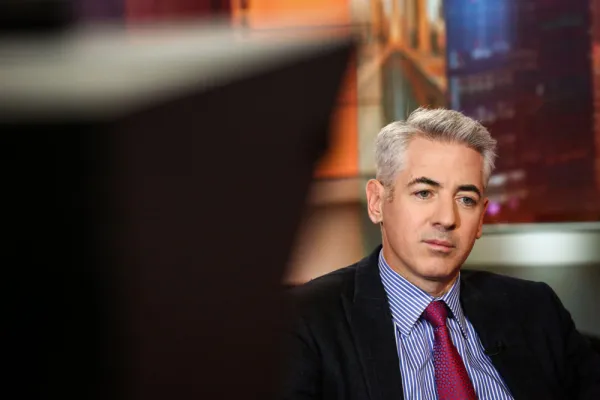The massive injections of liquidity, via quantitative easing, into the global monetary system has created a financial Waterworld. Drawing an analogy with the 1995 Kevin Costner film, this new Waterworld has corresponding climactic changes that impact the investment game. The impending possibility of this excess liquidity being withdrawn is likely to see winners and losers both immediately and over the longer term. Portfolio managers must navigate their vessels of capital — their funds — through the high seas of risk to drier land, keeping that capital waterproof by not only preserving its value but, where possible, adding to that value.
By injecting near limitless liquidity into the global monetary system while keeping real interest rates negative, Western monetary authorities have effectively melted the monetary ice caps. This has flooded the monetary environment and in doing so destroyed the anchorages and moorings that have constituted the foundation of Western investing for the past three decades — that is, the security of the so-called risk-free rate.
When Paul Volcker, chairman of the U.S. Federal Reserve from 1979 to 1987, restored the world of positive real interest rates in 1981, the risk-free rate became the foundation of both fixed-income and equity investing. In the case of bonds, positive real interest rates on government bonds guaranteed the risk-free status of these investment vehicles — capital invested earned a positive after-inflation return. In the case of equities, the risk-free rate underpinned the definition of the cost of capital and the determination of corporate value added, of real profit and not just accounting profit. But this world has not existed since Alan Greenspan, who succeeded Volcker as Fed chairman, moved interest rates underwater in 2002.
In the post-Volcker world, my interpretation of how monetary policy has evolved in the West and Japan is reflective of how central banks have been fighting the effects of economic aging or demographic decline. (Whether they knew then or now why they are behaving in such a way, however, remains doubtful.) Declining workforce participation ratios have started to take the heat out of cost-push inflation — that is, inflation caused by an increase in price of certain goods or services. This may have been misinterpreted as the Great Moderation (the reduction in the volatility of business cycle fluctuations starting in the mid-1980s), and aging populations’ more conservative spending patterns have reduced the natural rate of consumption growth.
The first dimension of QE — dramatically reduced interest rates to the point of being negative real rates — was introduced by the Bank of Japan in the 1990s and copied by Greenspan in 2002. The aim was to boost consumption by taking on both consumer and government debt. Eventually, consumers balked at taking on yet more debt. In the West, this happened post-2008, when consumers’ primary source of collateral, their ATMs disguised as houses, saw prices collapse and thus precluded further borrowing. Liberally aided by central banks, the banking systems narrowly avoided widespread bankruptcy. Since then banks have been unable to finance consumer expenditure as they have been repairing balance sheets by reducing leverage while also trying to increase their capital bases, usually at the behest of regulators.
By default, since 2008 the taking on of further debt has fallen mostly to governments. Central banks have played a critical role — a sizable share of that new debt has been monetized. This dramatic expansion of central bank balance sheets has become the second dimension of QE, something Japan is now also starting to explore.
All the while, the West and Japan have continued to age; Japan’s labor participation rate peaked in 1992, whereas the U.S.’s peaked in 2000. Spending patterns of older populations have exhibited growing conservatism. For example, 55 percent of private wealth in Japan is stored in cash. This conservatism may have even slowed down the money velocity of circulation, as it appears that retirees turn over their incomes less frequently than younger generations. If so, this would have a profound impact on the quantity theory of money equation, which lies at the heart of monetary economics. To date, this equation (MV=PT) has assumed that V (velocity of circulation) remains constant. If this is not the case, it would in turn cast doubt on the effectiveness of QE itself.
If this demographic interpretation is correct, QE — especially where it involves the wholesale monetization of debt — would amount to a frantic effort by Western and Japanese monetary authorities to stop the natural deflation of their economies as the size of their workforces starts to shrink as a percentage of total population. Of course, were technological advances and hence productivity so profoundly positive as to offset this demographic drag, economic growth would remain healthy. However, this does not seem to have been the case; Japan in particular has now endured two lost decades of growth.
I use the term “deflation” above deliberately. Notwithstanding current Fed chairman Ben Bernanke’s famous 2002 undertaking that he would not let deflation happen in the U.S., the risk of this appears to be growing. The massive increases in monetary inflation have not, as many feared, resulted in greater personal consumption expenditure inflation. Indeed, the Fed’s preferred measure of inflation is now at a post–World War II low.
QE antiaging cream has been so liberally applied by the developed world’s central banks that it has had the unintended consequence of cutting capital loose from its risk-free rate moorings. Some modern era investment practitioners argue that in destroying these anchorages, the monetary authorities have corrupted the world of investment as we know it. This, they maintain, now makes proper investment in fixed and equity investment effectively impossible.
I beg to differ. Western monetary authorities may indeed have cut capital adrift from its traditional anchorages and moorings, but they have not destroyed that capital. Survival, even prosperity, is still possible. Returns above annual inflation rates are still obtainable: Keynes maintained in 1930 that a compounded 2 percent real annual return was a sufficient long-term return for the average investor. However, if this anchorless capital is to prosper in today’s world, it must, as Darwin suggested, adapt to the new environment: Waterworld. The harsh and frequently unpredictable conditions of Waterworld are unlikely to be the permanent fate of that capital now cut adrift from the past world’s old sureties. Just as in the film Waterworld, the ultimate destination for virtually all capital is still dry land. The challenge for today’s navigators of capital is first to keep it alive, even allow it to prosper, on the journey to dry land.
My forecast is that most of this dry land will be located in the new world. In time this will offer new anchorages of certainty — new safe havens — new risk-free rates with real yields, and so new foundations upon which capital can base decisions to invest in both fixed income and equity. A few anchorages already exist: In Singapore, U.S. dollar returns on ten-year government bonds are still positive in real terms.
As asset managers, we must see ourselves as the navigators of the vessels full of capital unanchored to the traditional certainties of a positive-yielding, risk-free rate. Our challenge is to choose the appropriate vessel, ensure it remains watertight (that capital preserves its value), deal with the winds and currents we encounter on a daily basis and set a course mostly for the emerging certainties — the new anchorages.
The vessels, or strategies, we choose and the specific way we outfit them — for example, do we employ the spinnaker of currency overlays? — will be critical to our success. So too will be a correct interpretation of the macroeconomic weather conditions we face. As a general rule, the shorter the journey time between the anchorages of the past world and those of the new, the better. But some shortcuts may mask hazardous shallows and conceal jagged rocks.
Capital was surely not meant to sail the high seas of risk indefinitely. Dry land is capital’s preferred destination because dry land is where capital prospers most.
Michael Power is a strategist at Investec Asset Management.






